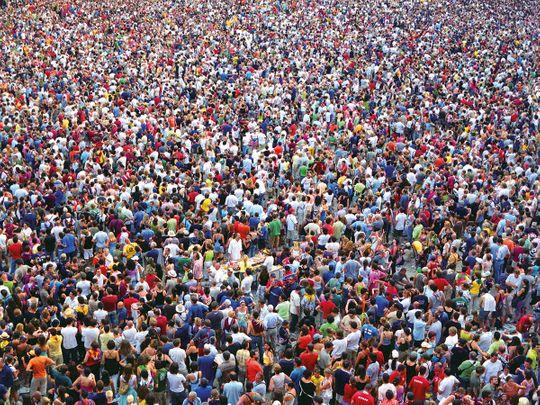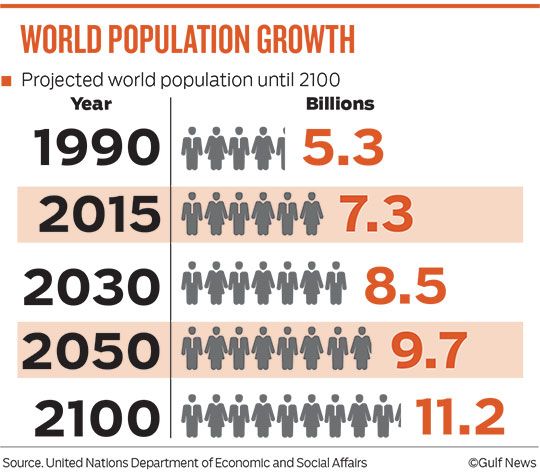
United Nations: The world’s population is slowing down and growing older.
Women are having fewer babies, the number of elders is rising fast, and an increased number of countries will face population declines, according to a projection of global population released by the United Nations.
What are the top level findings?
The global population of 7.7 billion will increase to 9.7 billion by mid-century and could peak at 10.9 billion by 2100, the United Nations said in its ‘World Population Prospects 2019’ report. The findings are a downward revision from the previous forecast by the global body, when it projected 11.2 billion people would inhabit the planet by century’s end.
The 2019 projection cited slowing population growth, punctuated by declining fertility, as an underlying trend. It also said people ages 65 or older were the fastest-growing segments of the global population. The global fertility rate, which fell from 3.2 births per woman in 1990 to 2.5 in 2019, is expected to fall to 2.2 in 2050, the 2019 projection said.
Why is the fertility rate figure so important?
A fertility rate of 2.1 births per woman is required to ensure replacement of generations and avert a long-term population decline in any particular country or region, absent immigration. However, fertility rates remain high in some parts of the world — notably sub-Saharan Africa, where the population could double in the next 30 years.
Are these the final numbers?
UN Population Division Director John Wilmoth cautioned that because 2100 is many decades away this outcome “is not certain, and in the end the peak could come earlier or later, at a lower or higher level of total population”.
2027
is when India is expected to overtake China as the world’s most populous country.The new population projections indicate that nine countries will be responsible for more than half the projected population growth between now and 2050, including India, Pakistan, Egypt and the US. “Many of the fastest growing populations are in the poorest countries, where population growth brings additional challenges in the effort to eradicate poverty, promote gender equality and improve health care and education,” said Lu Zhenmin, UN Undersecretary-General for Economic and Social Affairs.
What does this mean for nations with older people?
The ageing trend has troubling implications for countries with growing populations of retirees. A measurement called the potential support ratio, which compares populations of working-age people to those 65 or older, is falling around the world, the 2019 projection said. In Japan, where the ageing population is a well-known problem, the ratio is 1.8, the lowest. By 2050, the 2019 projection said, 48 countries — mostly in Europe, North America and Eastern and Southeast Asia — are expected to have ratios lower than 2.
What are the implications for the global refugee population?
According to the report, migration is also a major component of population growth or loss in some countries. Between 2010 and 2020, it said 14 countries or areas will see a net inflow of more than one million migrants while 10 countries will experience a similar loss. For example, some of the largest outflows of people — including from Bangladesh, Nepal and the Philippines — are driven by the demand for migrant workers, the report said. But some migrants are driven from their home countries by violence, insecurity and conflict, including from Myanmar, Syria and Venezuela. The United Nations said countries experiencing a net inflow of migrants over the decade include Belarus, Estonia, Germany, Hungary, Italy, Japan, Russia, Serbia and Ukraine.









